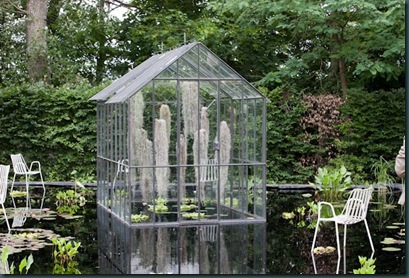What can you do with all the ash from burning wood in your fireplace or wood stove? Wood ash can be useful in home gardens, in your compost pile or as a pest repellent, explained Dan Sullivan, soil scientist with the Oregon State University Extension Service.
Wood ash has long been recognized as a valuable substance, Sullivan said. Many centuries ago, ancient Roman scientists and scholars documented the value of returning ash to the land.
In the 18th century, the benefits of ash-derived potash, or potassium carbonate, became widely recognized. North American trees were felled, burned and the ash was exported to Great Britain as "potash fever" hit. In 1790, the newly-independent United States of America's first patented process was a method for making fertilizer from wood ash (U.S. patent number 1: "An improved method of making pot and pearl ash)."
Cheaper sources of lime and potassium eventually killed the commercial market for wood ash, said Sullivan.
For the home gardener, however, wood ash can be a valuable source of lime, potassium and trace elements.
"Since wood ash is derived from plant material, it contains most of the 13 essential nutrients the soil must supply for plant growth," said Sullivan. "When wood burns, nitrogen and sulfur are lost as gases, and calcium, potassium, magnesium and trace element compounds remain. The carbonates and oxides remaining after wood burning are valuable liming agents, raising pH, thereby helping to neutralize acid soils."
Where soils are acid and low in potassium, wood ash is beneficial to most garden plants except acid-loving plants such as blueberries, rhododendrons and azaleas. Use wood ash on flower beds, lawns and shrubs.
The fertilizer value of wood ash depends on the type of wood you burn. As a general rule, hardwoods such as oak weigh more per cord and yield more ash per pound of wood burned. Hardwood ash contains a higher percentage of nutrients than ash from softwoods such as Douglas-fir or pine.
"Hardwoods produce approximately three times as much ash per cord and five times as many nutrients per cord as softwoods," said Sullivan.
Ash from a cord of oak meets the potassium needs of a garden 60 by 70 feet, he said. A cord of Douglas-fir ash supplies enough potassium for a garden 30 by 30 feet. Both types of ash contain enough calcium and magnesium to reduce soil acidity (increase soil pH) slightly.
One-half to one pound of wood ash per year is recommended for each shrub and rose bush. Spread ash evenly on the soil around perennial plants. Rake the ash into the soil lightly, being careful not to damage the roots. Never leave ash in lumps or piles, because if it is concentrated in one place, excessive salt from the ash will leach into the soil, creating a harmful environment for plants.
Lawns needing some lime and potassium can also benefit from wood ash. Apply no more than 10-15 pounds of ash per 1,000-square feet of lawn; at high levels, ash can be toxic. Do not use if soil pH is more than 7.0 or if potassium levels are excessive.
"You may want to have your soil analyzed periodically to determine its need for lime and potassium," said Sullivan. "As a general rule, acid soils that would benefit from ash application are usually found in those places in Oregon that get more than 20 inches of rain per year. Alkaline soils (pH greater than 7) soils in portions of central and eastern Oregon generally won't benefit from ash application."
In compost piles, wood ash can be used to help maintain a neutral condition, the best environment to help microorganisms break down organic materials. Sprinkle ash on each layer of compost as the pile is built up. Ash also adds nutrients to compost.
If used judiciously, wood ash can be used to repel insects, slugs and snails, because it draws water from invertebrates' bodies. Sprinkle ash around the base of your plants to discourage surface feeding pests. But once ash gets wet, it loses its deterring properties. Continual use of ash in this way may increase the soil pH too much, or accumulate high salt levels harmful to plants.
Sullivan offered advice for using wood ashes as a soil or compost amendment:
- Protect yourself when applying wood ash. Use the same precautions you would use when handling household bleach, another strongly alkaline material. Wear eye protection and gloves. Depending on the fineness of the ash, you may want to wear a dust mask.
- Do not use ash from burning trash, cardboard, coal or pressure-treated, painted or stained wood. These substances contain trace elements, harmful to many plants when applied in excessive amounts. For example, the glue in cardboard boxes and paper bags contains boron, an element toxic to many plant species at levels slightly higher than that required for normal growth.
- Do not use ash on alkaline soils or on acid-loving plants.
- Do not apply wood ash to a potato patch as wood ashes may favor the development of potato scab.
- Do not apply ash to newly germinated seeds, as ash contains too many salts for seedlings.
- Do not add ash with nitrogen fertilizers such as ammonium sulfate (21-0-0-24S), urea (46-0-0) or ammonium nitrate (34-0-0). These fertilizers produce ammonia gas when placed in contact with high pH materials such as wood ash.

















































